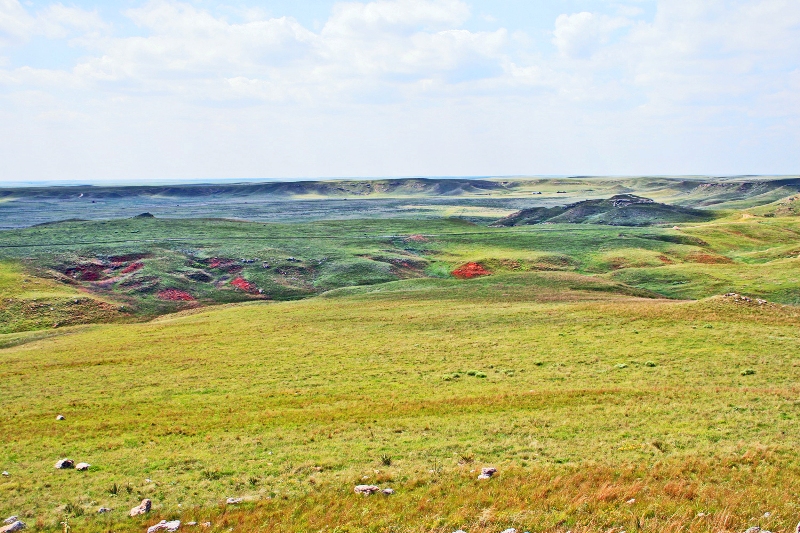The Big Basin Prairie Preserve is 1,818 acres of native mixed grass prairie managed by the Kansas Department of Wildlife and Parks. This area is in the Red Hills region of Kansas. The landscape can generally be described as rolling hills with both level uplands and small canyons. The preserve also includes an intermittent stream, Keiger Creek, which flows through the northeast corner of the preserve, and two non-draining basins that make the preserve topographically and geologically unique.
ABOUT BIG BASIN PRESERVE
Source: kdwp.state.ks.us
BIG BASIN Big Basin is a large circular depression. It is about one mile in diameter and about 100 feet deep. The walls of the basin are nearly vertical. Scattered across the floor of Big Basin are a number of small ephemeral ponds that catch and temporarily hold the water that flows into the basin. U.S. 283 bisects Big Basin, with approximately two-thirds of the basin lying east of the road and within the confines of the preserve. The remaining western third of the basin is privately owned.
LITTLE BASIN
The Little Basin is about 280 yards in diameter and 35 feet from rim to floor. Within Little Basin is a small permanent pond known as St. Jacob's Well. St. Jacob's Well is a pool of water about 84 feet in diameter that has never been known to go dry. The well has been the subject of many local legends, most associated with the idea that the well was bottomless and/or connected to an underground stream that was capable of washing away anything that fell in the well. The well was also reportedly inhabited by blind fish. Research has shown the well to be roughly funnel shaped and 58 feet deep. No evidence of any underground stream or blind fish has been found.
THE GEOLOGY
Big Basin, Little Basin, and St. Jacob's Well were formed in the recent geological past by a process known as solution-subsidence. This process occurs when surface water gains access and dissolves underground deposits of salt, gypsum, or limestone. The overlaying layers of rock and minerals subside to fill the volume vacated by the water soluble deposits. The process of solution-subsidence is thought to still be occurring, and small depressions have been noted forming within Little Basin.
THE HISTORY
The Kansas Department of Wildlife and Parks purchased the property in 1974. The previous owner, The Nature Conservancy, sold the property with the stipulation that it be managed as a nature preserve. In December of 1978, the preserve was designated as a National Natural Landmark and was added to the National Registry of Natural Landmarks.
Historically, St. Jacob's Well and Big Basin were used as landmarks and watering sites on trail drives that were bringing cattle from Texas. A Living Water Monument commemorates the area's importance to early settlers.
Click here, to watch a You Tube video about Big Basin.
